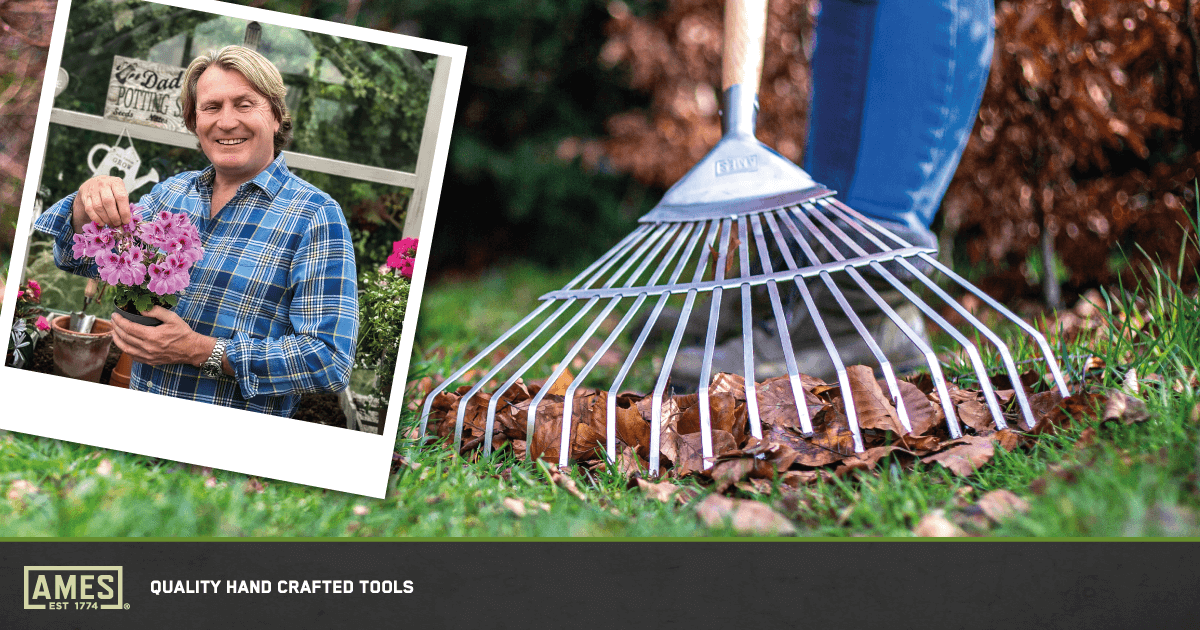Giving your lawn a little TLC in the early spring is a guaranteed way to help it thrive throughout the growing season and summer before it goes dormant, and growth slows in the autumn and winter. In this blog, I will advise you on the different ways you can improve the quality and appearance of your lawn with a few different steps, and the perfect tools you should use to do it.
Raking
Clearing debris from the surface of your lawn is more valuable a process than you would initially have thought. In early spring there may still be leaf dumps left from deciduous plants in autumn and winter that could do with finally being cleared away. Plus, early spring pruning you might have already done may have left behind some smaller, more fiddly branches and leaves that need clearing. If you leave lots of debris on your lawn, the grass won’t have ready access to sunlight, and could provide the perfect habitat for garden visitors you would prefer to avoid, such as slugs and snails.
AMES Tools Extra-Wide leaf rake can make an easy job of this, thanks to the large size of the rake head and 24 wide tines. And because the head is made of plastic, larger jobs don’t need to feel like a chore, as this piece of kit is lightweight, and its long handle ensures you won’t strain your back, with leverage doing the work for you.



Another raking lawn maintenance job that you can carry out in early spring, is some light scarifying of the surface. What this does, is remove any thatch or moss from the surface of the lawn, which helps it to grow back healthier and more luscious than before. Plus, by doing this in early spring, the warming soil will give your lawn a great chance at recovering before the drier weather of summer. You do this by dragging a steel tine rake across the surface of your lawn applying moderate pressure, repeatedly until the thatch and moss have been lifted. AMES Tools Lawn & Leaf Rake made with Stainless Steel is perfectly built for jobs like this. The stainless-steel material means this rake head is strong and durable, so it won’t easily warp under the pressure of scarifying your lawn.



Weeding
Removing perennial weeds from the lawn such as dandelions and daisies doesn’t need to feel like an impossible task. You may prefer to keep them, if you love the look of daisies and buttercups sprouting up through your lawn, however, there are some advantages to removing them. Perennial weeds such as these have rosette foliage, which can easily create patches of grass without access to sunlight. The easiest way to tackle these weeds is to remove them as soon as you spot them. However, if you remove daisies and dandelions from your lawn, please plant other early ornamental flowering plants in your garden to offset the loss for pollinators, as these weeds are a good source of food for bees and butterflies early in the season.
AMES Tools Hand Daisy Grubber made with Carbon Steel can be easily inserted into the soil, fixing the surface of the weeds within the gap of the fork, and hinge the handle down, lifting the weed including the taproot from the ground. You can then fill the hole you’ve made with peat-free compost, sprinkle some grass seed over the top, and water. This fresh grass will replace the gap left by the weed and leave your lawn looking flawless.



Manicuring your lawn
Early spring is also the time our lawns start to grow back with vigour, so starting a process of regular mowing becomes necessary. Once the weather has warmed up enough, and the grass is showing significant signs of growth, mow your lawn, making sure the blades are raised to 0.5cm higher than their usual cutting height. This is to give the lawn a chance to recover, as the growing speed gradually increases.
Once your lawn is mowed, make sure its edges look perfectly manicured, by using AMES Tools Lawn Edger made with Carbon Steel. The half-moon shape allows you to effortlessly cut through turf and soil, and the handy tread along the top of the blade gives your foot a good purchase to push down into the ground. To help you maintain a straight line, you can use some pegs inserted into the soil, and string to use as a guide. Work your way along the length of your lawn or garden beds, until you’re happy with your borders. Any unwanted turf or grass that you have cut away will be great for the compost bin.



Make sure your lawn is manicured and spring ready with the right tools, and a few simple and easy steps.



